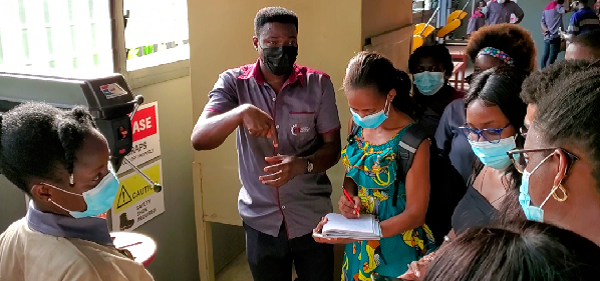
There’s always room at the top : Through expectations of creativity, innovation, performance
These days, no sooner had one invention come about and boosted productivity than another proceeded to do a much better job than the earlier one. There will be no end to human innovation and creativity. And for that reason, courses should consistently be updated to meet higher expectations of students’ needs.
Supporting superior imaginative prospects is necessary to avoid low quality outcomes.
Advertisement
Colleges and universities, for instance, need to consider three key thresholds: One, will the subject help students find appropriate jobs.
Two, will it help students to create their own businesses. Three, will the courses help students to study further after exiting. If any of the proposed criteria is not met, then perhaps there is the need to examine the reasons why.
I recently received an article by a certain Richard Adams titled “English universities face fines over drop out and employment rates” in which was indicated that “Too many students [are] recruited on to courses with weak outcomes which do not improve their life chances.
We can now intervene where outcomes are low, and where universities and colleges cannot explain why,”
It was noted that “students choose higher education for a variety of reasons. Many are focused on improving their career prospects” so it was necessary to tackle courses for students going into professional work.
Expectations, performance
In my book, “Strategies For Effective Teaching & Learning”, a chapter was titled, “An amusing perspective on supporting and appreciating difference” where the following story was used as an illustration of expectations through the best performance.
The story was about three hens – all different in appearance – who assembled before a wise king, to settle a quarrel on which one of them was the most beautiful.
The king indicated more interest in what the hens could do than the vanity of outward appearances. So he suggested that the hens engage in a project so that their beauty could be revealed and assessed meaningfully through performance.
The most significant feat of any hen, of course, is to lay an egg. So they set about to do just that. The first hen laid an egg so perfect that it met everyone’s expectations of an ideal egg. When the second hen sat down to lay her egg, everyone knew she could not lay a more perfect egg.
But when her egg appeared, it was so huge that everyone had to make a slight adjustment in their expectation in order to appreciate that unusual performance.
What could not compare with the ideal egg was more than made up by the extraordinary size.
When the third hen sat down to deliver, everyone knew it was impossible to lay a more ideal egg or a bigger egg. But what came out was neither an ideal nor large egg. To everyone’s surprise, it was a perfectly cubic egg with every side of the cube a different colour. All agreed this was a truly fantastic egg.
This fable is a reflection on what happens often in learning situations where we demand the one right answer or the preconceived idea. The greatest harm we do to children in schools is to insist that there is only one ideal way of thinking about things or doing them. The first egg fit an ideal expectation.
After the second egg, the eyes of the observers were opened to the possibility that there just might be some new unanticipated dimensions that the third hen may reveal.
The creative opportunities and daring possibilities started flowing in the audience. That set the observing minds wondering about fresher prospects, such as the smallest egg ever, or a heart shaped egg, or the likelihood (in the king’s mind) of a golden egg.
Creative projects, possibilities
The idea is to help students create ideas, images or products (like a cubic egg) – that “violate” our expectations.
Like the wise king, we need to stretch the mental modes far out enough to access new possibilities. Project work often falls in the category of thinking old things anew, with the learners leading the tasks and wading through possibilities for themselves as original thinkers.
Serendipitous deviations are all too often dismissed by teachers overly concerned about students getting things right. But some great discoveries were made when particular expectations drifted off the mark, into the unknown.
A discerning teacher may be able to respond aptly to such unusual drifts – or mistakes – to make sense out of the unexpected.
Sometimes the unexpected may set a precedent by enabling the “creative” student to continue to be creative. Also, and quite importantly, it encourages the reluctant or the “traditionally inclined” learner to be more of a risk taker. In the end, the whole class may be supported in the effort to stretch a bit out of their comfort zones, and still be at ease. Such intricate learning activities may not necessarily be recognized by standardized tests or by teachers themselves, yet are quite important.
Accept new ideas
The story’s focus fits Eleanor Duckworth’s work, “The Having of Wonderful Ideas” about creative solutions or flights of fancy that support pupils to explore and make discoveries and share those findings. The essence of intellectual development, she says, depend to an overwhelming extent on allowing learners to develop and accept their own novel ideas, and to work through them, and to feel good about themselves and respect each other’s contributions.
As the story suggests, when students are given the latitude to express their full selves and be surprised by their own and others’ findings, their imagination is stretched in significant ways.
Email: [email protected]
Students at Design & Technology Institute (DTI)



